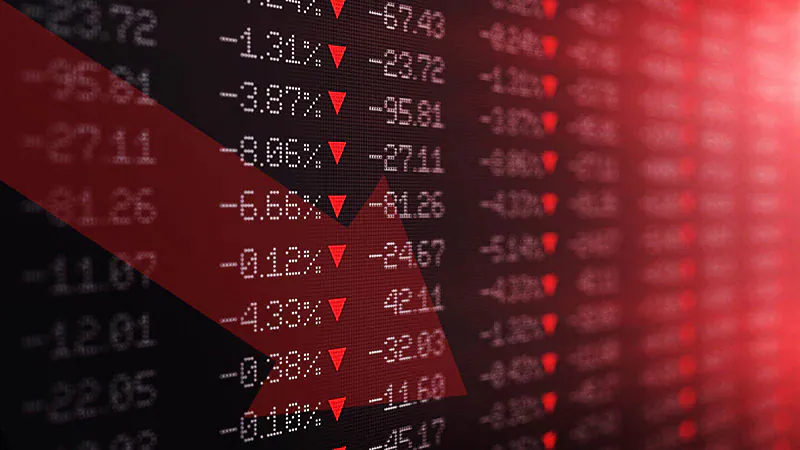
Wednesday Roundup: Markets retreat with eyes on war, inflation, bonds; What to watch for
Both index futures in the US and European stock markets are down and the sovereign bond market, which has attempted some recovery, is back to showing higher premiums.
Today the stock markets are testing the strength of the recent rebound and the resistance of investors to pocket the accumulated gains. News attention is divided between the hope that a ceasefire in the Russian war will materialize, albeit with a good dose of skepticism, and the flood of macroeconomic data. Indicators around the globe, especially confidence and prices, already show the damage caused by the armed conflict.
On Wednesday morning, index futures in the US and most European stock exchanges fell – the British FTSE struggled to stay in the blue. Gold and oil, by contrast, rose. After operating in different directions, sovereign bonds were once again losing face value. Moments ago, the premiums on 10-year US bonds rose to 2.41%, while the 2-year bond yielded 2.32%.
Real change or new tactic?
Within NATO, however, there are allies who are skeptical of Russia’s promise to reduce military operations in Ukraine. Will it mark a turning point in the conflict or simply a tactical shift? President Joe Biden said he will wait and see. Meanwhile, the flow of refugees fleeing the war in Ukraine reaches 4 million people after five weeks of fighting.
Rampant inflation
One example is Spain’s Consumer Price Index (CPI), released this morning. The March indicator surprised with an increase of 9.8% in the annual comparison, the highest rate since 1985. It was well above the expected 8% and the 7.6% registered in February. The pressure of the war on energy commodities, which skyrocketed in the face of Russian shortages, weighed on end-consumer electricity and gas bills.
A battery of global macroeconomic data is scheduled for this week and confidence indicators, if materialized, will herald a sharp drop in consumption. The scenario gets complicated when, in order to stop the galloping inflation, the central banks announce a period of monetary tightening.
Confidence in the Eurozone economy has fallen to the weakest level in a year, with inflation expectations jumping to the highest level since records began in 1985.
Contingency plans
The news on supplies is far from encouraging. Germany has activated an emergency plan to help Europe’s biggest economy manage limited energy supplies as Russia could halt deliveries of natural gas.
The government in Berlin has started the first of three possible phases of the plan to deal with the squeezed energy supply, Economy Minister Robert Habeck said today. The first phase involves intensive monitoring of consumption and gas reserves.
The move comes after Russia insisted that energy payments be made in rubles rather than euros or dollars, a demand German government officials rejected. Germany’s main energy suppliers have warned in recent days that the dispute could lead to disruptions.
Recession looming?
All this imprecise perspective, by the way, has shaken the bond markets. For the first time since 2019, yesterday the yield on two-year US Treasuries briefly surpassed the premium on the ten-year bond. The inversion of the yield curve sparks a warning in the markets as it reinforces the view that rate hikes by the Federal Reserve could trigger a recession.
Yesterday’s reversal occurred as two-year yields increased while 10-year yields declined, intersecting at the point of 2.39%. Prior to 2019, when the curve inverted in August during a U.S. trade dispute with China, the last persistent inversion of the Treasury curve occurred in 2006-2007.
Tuesday’s numbers
Dow (+0,97%), S&P 500 (+1,23%), Nasdaq (+1,84%), Stoxx 600 (+1,74%), Ibovespa (+1,08%)
The impetus came with Russia’s announcement that it would “drastically” reduce military activity near Kiev and Chernihiv. The Kremlin later clarified that this did not mean a ceasefire in the war that began more than a month ago in Ukraine. But the first signs of an agreement led the market to chain the fourth consecutive day of rallies.
What to watch for
Wednesday
- USA: MBA Mortgage Applications and Interest; MBA Purchasing Index; Variation in Private ADP/Mar Jobs; PCE/4Q21 Price Core; GDP/4Q21; Consumer Expenses/4Q21; Crude Oil Inventories; Activity of Oil refineries by the EIA; Gasoline Production and Inventories
- Europe: Euro Zone (Business and Consumer Confidence; Business Climate, Consumer Inflation Expectations; Industrial and Services Confidence – March); Germany (IPC/March); Spain (IPC/March, Business Trust); Italy (IPP, Business and Consumer Confidence, Industry/March Sales); Portugal (Consumer and Business Confidence/March)
- Asia: Japan (Industrial Production/Feb); China (Composite and Industrial/March PMI)
- Latin America: Brazil (IGP-M/Mar; IPP/Feb; Bank Loans/Feb; Foreign Exchange Flow); Mexico (Unemployment Rate/Feb; Fiscal Balance); Chile (Manufacturing Production/Feb, Unemployment/Feb)
- Central Banks: Statement by Ben Broadbent, Bank of England (BoE)
Thursday
- US: OPEC meeting; Initial Applications for Unemployment Insurance; Challenger/Mar Announced Layoffs); PCE/Feb Price Index; Personal Income, Expenses and Consumption/Feb; Chicago/Mar PMI; Natural Gas Stock
- Europe: Eurozone (Unemployment Rate/Feb); Germany (Retail Sales/Feb; Unemployment Rate/Mar); France (IPP, IPC and Consumer Spending/Feb); United Kingdom (GDP/4Q21; Corporate Investment/4Q21; Current Transactions; Nationwide Property Price Index/Mar); Spain (Current Transactions/Jan); Italy (Unemployment Rate/Feb; CPI/Mar); Portugal (IPC)
- Asia: Japan (Construction Orders/Feb; New Home Construction/Feb; Tankan Industrial Projection Index/1Q22; Industrial PMI/Mar); Hong Kong (M3 Currency Mass; Retail Sales/Feb); China (Caxin/Mar Industrial PMI)
- Latin America: Brazil (Unemployment Rate; Long-Term TLP Rate; Budget Balance/Feb)
- Central Banks: Speeches by Andrea Enria and Luis de Guindos (ECB) and John Williams (FOMC/Fed)